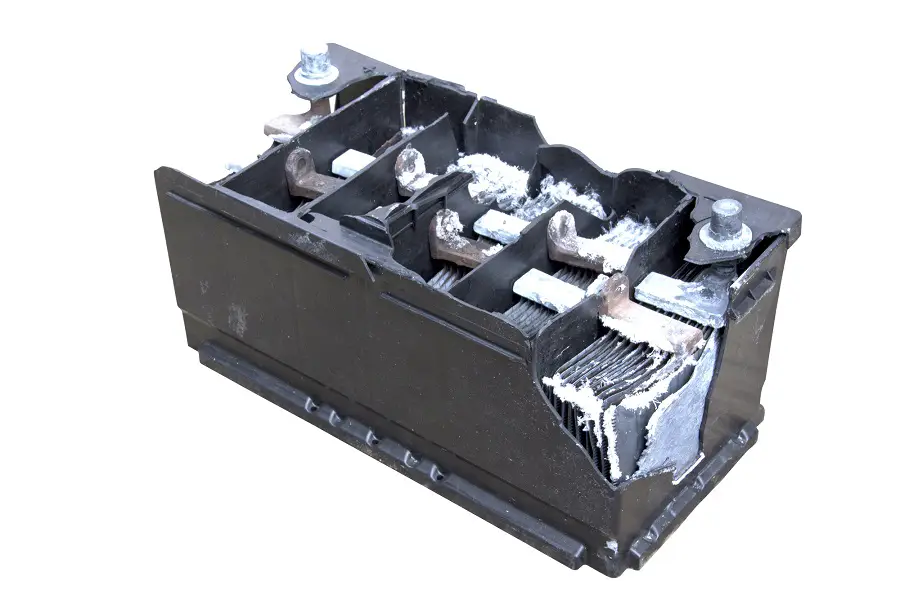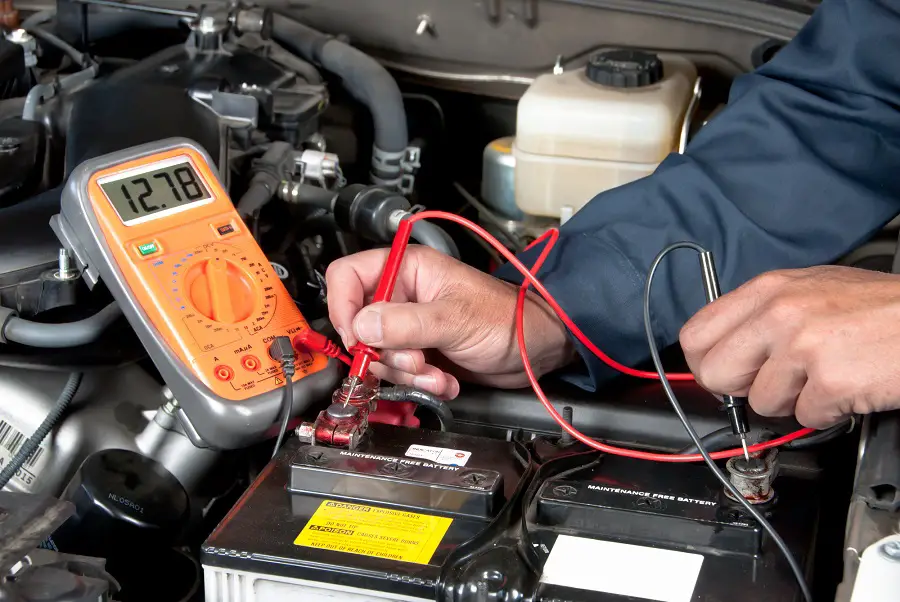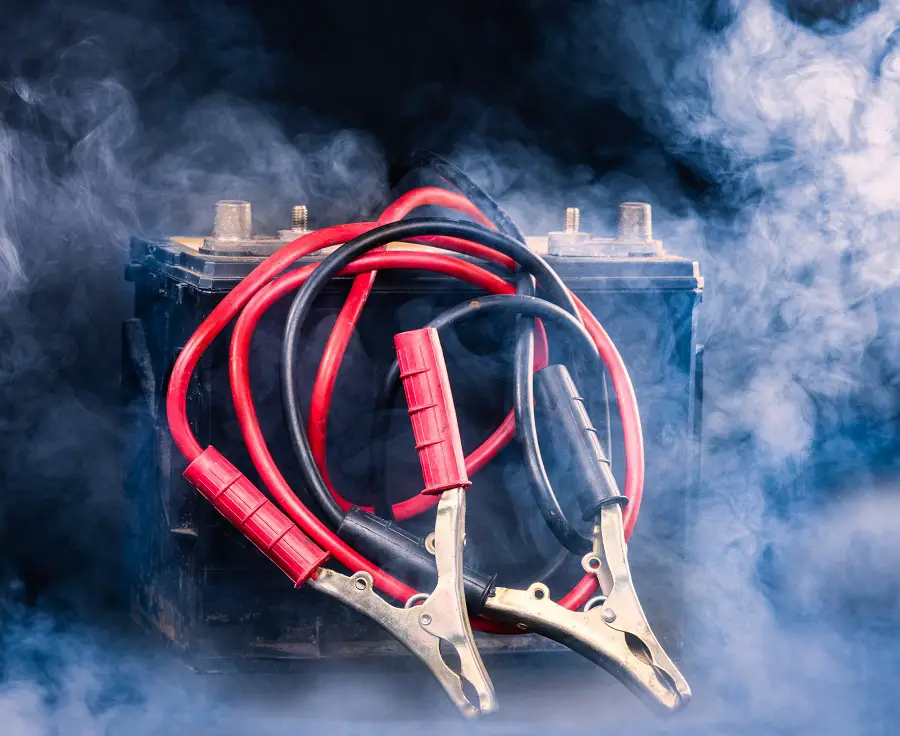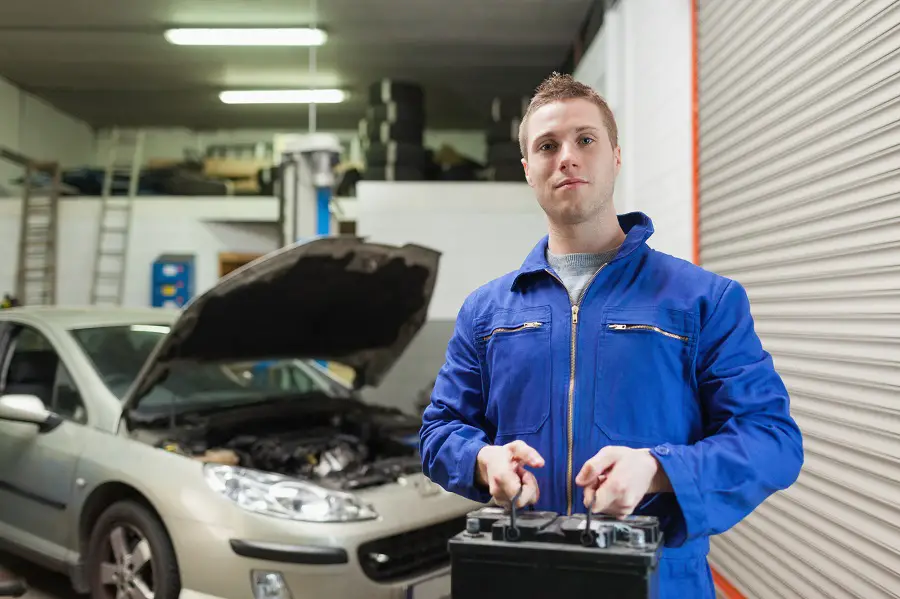Car batteries are powerful, little boxes that are easy to ignore until they die on us, leaving us stranded at any location. Luckily, one of the most important steps for keeping your unsealed battery maintained properly can be safe and easy for you to perform at home.
The lead-acid batteries used to power most cars require a certain amount of water to work efficiently. Batteries that are low on water will not work to their fullest capacity while adding too much water can cause corrosion and damage.
Maintaining the proper water levels in a battery is a great way to get the best performance out of your vehicle and may even extend battery life. How often you should check its water levels will depend on the battery’s age and how frequently the car that equips it is driven.
What Is the Fluid In A Car Battery?
The fluid that sits inside car batteries is a mixture of water with sulfuric acid called electrolyte.
Why Do Some Batteries Need Fluid?
The electricity that powers car batteries is created by electrolyte, which turns to gas and evaporates as the battery discharges and recharges. That will require you to add clean water to unsealed batteries to refill the electrolyte levels when they get low.
Excessive sulfuric acid can damage the battery with permanent corrosion and sulfation if water doesn’t get added when needed.
What Do You Use To Top Off A Battery?
You should only use distilled or deionized water to top off, or refill, an unsealed car battery. A clean funnel or a turkey baster can be used to control the water flow and ensure that the water level is neither too high nor too low.
You should never use tap water to refill your battery because it may include minerals, chemicals, and impurities that can cause damage. Adding sulfuric acid to your car battery is never recommended because it can also cause corrosion rapidly.
Pure water is all that your battery ever needs for a refill.
Difference Between Sealed and Unsealed Batteries
Sealed batteries are also known as maintenance-free batteries because they never have to be refilled with water. These batteries hold just enough liquid to help electrolytes flow freely and are sealed to prevent leakage and loss of electrolytes while operating.
Most new cars are now being equipped with sealed batteries. Sealed batteries perform efficiently in a wider variety of climates than unsealed ones and can also charge faster. Sealed batteries are identifiable by their lack of filler caps and usually have a label indicating the battery type.
Unsealed batteries are more traditional and require you to check and maintain the water levels throughout their lifetime. Failure to maintain these batteries accordingly can cause them to deteriorate quickly and have negative effects on your car’s performance.
In contrast to sealed batteries, unsealed ones run the risk of liquid leaking if they are shaken out of place or cracked. Unsealed batteries may also be labeled as “wet-cell” batteries and can be identified by removable filler caps that indicate they can be opened and maintained.
Both types of batteries contain sulfuric acid, but there are advantages and disadvantages to owning each one.
Unsealed batteries are more expensive and high-maintenance, but caring for them properly can make them last longer without needing a replacement. The water inside unsealed batteries is more likely to freeze or evaporate in extreme weather.
Some people prefer the convenience of owning sealed batteries and are never bothered by their shorter life-spans since they still provide decent power for their needs.
Adding Water To Your Battery
Always make sure to wear proper safety gear like an apron, gloves, and goggles when maintaining the battery water levels, which contain sulfuric acid.
The battery should always be disconnected from the car and cleaned before adding water.
It is also recommended to add water to the battery while it is fully charged because it can help you prevent overfilling. Electrolyte levels can expand, overflow, and damage your battery while powered if too much water gets added without being fully charged.
Remove the filler caps that cover the battery cell ports by using a flat plastic scraper or flat-head screwdriver as a lever to gently pop off the caps. You will be checking for the water level inside of those cell ports before adding water.
There should be an equal amount of fluid covering the cells in each port unless there’s a leak or crack in the battery case. If you can confirm any leaks or cracks in your battery, it is time to replace it.
The water level is low when the cells from each port are not fully submerged in electrolyte, preventing the battery from working efficiently.
Slowly and carefully, pour only distilled or deionized water into each cell port.
If no markers indicate the suggested water level for a battery, you should fill it up until fluid sits right below the battery cap bottom without reaching it.
Remove any excess fluid with a turkey baster and place the filler caps back on the cell ports before installing the battery back in your car.







